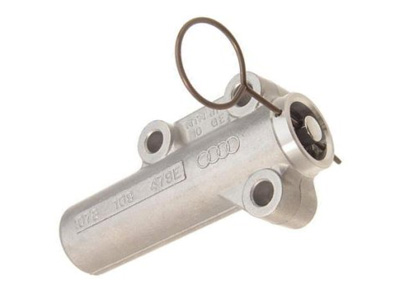Clutch System: The Unsung Hero of Every Vehicle's Performance
2025-03-12
When we think of a vehicle’s performance, we often focus on the engine, transmission, or even the tires. However, there's an integral component that plays a pivotal role in ensuring smooth acceleration and deceleration, yet often goes unnoticed: the clutch system. This humble mechanism is the unsung hero that makes it possible for drivers to shift gears smoothly, manage engine power, and maintain control over the vehicle. But what exactly is a clutch system, and how does it work?
What is a Clutch System?
The clutch system is a critical part of a manual transmission vehicle that allows the driver to temporarily disconnect the engine from the drivetrain. This enables smooth gear changes and the controlled application of power from the engine to the wheels. In simpler terms, the clutch is responsible for engaging and disengaging the engine from the transmission, allowing the driver to control the vehicle’s speed and power output.
The clutch system comprises several key components, including:
- Clutch pedal: Operated by the driver’s foot to engage and disengage the clutch.
- Clutch disc: The friction surface that connects the engine to the transmission.
- Pressure plate: It applies pressure to the clutch disc, holding it in place.
- Flywheel: A heavy disc that helps maintain engine speed and smooths out power transitions.
How Does a Clutch System Work?
At its core, the clutch system works through friction. When the clutch pedal is pressed, the clutch disengages, separating the engine and transmission. This disconnects the engine’s power from the wheels, allowing the driver to shift gears. Once the clutch pedal is released, the clutch re-engages, and the engine’s power is transferred back to the wheels.
This process involves several steps:
1. Pressing the Clutch Pedal: When the driver presses the clutch pedal, it pushes the release bearing against the pressure plate, which disengages the clutch disc from the flywheel.
2. Shifting Gears: With the clutch disengaged, the transmission can shift into the desired gear without causing damage or strain.
3. Releasing the Pedal: When the driver releases the clutch pedal, the pressure plate applies force back to the clutch disc, re-engaging the engine and transmission, and allowing power to be transmitted to the wheels.
This seamless transition allows for smooth acceleration, deceleration, and gear shifting.
Types of Clutch Systems
Clutch systems come in various forms, depending on the vehicle's design and the driver’s needs. Here are the most common types of clutch systems found in vehicles:
1. Single Plate Clutch: This is the most common clutch type in passenger cars. It uses a single friction plate between the engine and the transmission. It’s simple, effective, and cost-efficient.
2. Multi-Plate Clutch: Often found in high-performance vehicles or motorcycles, multi-plate clutches use multiple friction plates stacked together. This setup provides a higher torque capacity and smoother engagement.
3. Diaphragm Spring Clutch: This system uses a single diaphragm spring instead of multiple coil springs, making it more compact and providing greater force with less effort from the clutch pedal. It’s commonly used in modern cars.
4. Hydraulic Clutch: Hydraulic clutch systems use a fluid-filled system to engage and disengage the clutch. They provide a lighter clutch pedal feel and more precise control over the clutch’s engagement, making them popular in modern vehicles.
Signs of a Worn-out Clutch System
Like any mechanical component, the clutch system is subject to wear and tear over time. If the clutch begins to fail, it can lead to performance issues, affecting how your vehicle drives. Here are a few signs that indicate your clutch system may need attention:
- Slipping Clutch: If the engine revs up but the vehicle doesn’t accelerate as it should, your clutch may be slipping. This often happens when the clutch disc is worn or damaged.
- Difficulty Shifting Gears: If you experience trouble shifting into gears, it could be a sign that the clutch isn’t fully disengaging, or the clutch cable or hydraulic fluid levels are low.
- Vibrations or Noises: Unusual vibrations or noises when pressing the clutch pedal could indicate worn-out components like the flywheel or pressure plate.
- High Clutch Pedal: If the clutch pedal feels too high or requires more effort to push, it could be a sign of hydraulic fluid issues or worn components.
Why is the Clutch System So Important?
The clutch system is crucial for the overall performance and drivability of a manual transmission vehicle. Here’s why:
1. Smooth Gear Shifting: Without a properly functioning clutch, shifting gears would be difficult and rough. The clutch ensures that the transition between gears is smooth, allowing the vehicle to accelerate and decelerate without jerking.
2. Control Over Engine Power: The clutch gives the driver control over how much power is sent to the wheels. By disengaging the clutch, the driver can prevent the engine from stalling, while engaging it smoothly transitions power to the wheels.
3. Preventing Engine Stalls: The clutch system helps prevent the engine from stalling when the vehicle is idling or coming to a stop. By disengaging the engine from the transmission, the driver can control the vehicle’s motion while keeping the engine running.
4. Fuel Efficiency: A well-maintained clutch system contributes to fuel efficiency. By allowing smooth engagement, it prevents unnecessary strain on the engine, which can lead to better fuel economy.
Maintaining Your Clutch System
Regular maintenance of your clutch system is essential to ensuring it lasts for years and performs at its best. Here are some tips for keeping your clutch in top shape:
- Avoid riding the clutch: Keeping your foot on the clutch pedal while driving can cause unnecessary wear and tear. Always fully engage or disengage the clutch when necessary.
- Don’t overheat the clutch: Avoid excessive clutch slippage by shifting gears quickly and smoothly.
- Check for fluid leaks: If you have a hydraulic clutch system, regularly check the fluid levels to ensure proper function.
- Get regular inspections: Have your clutch system checked during routine maintenance to catch any early signs of wear.
Conclusion: The Vital Role of the Clutch System
The clutch system is an essential component that keeps your vehicle running smoothly. It may not be as glamorous as the engine or the transmission, but it is just as important in ensuring that your car performs at its best. Whether you're driving a manual transmission car or enjoying the convenience of an automatic, understanding the clutch system’s role gives you a deeper appreciation for the fine-tuned mechanics that make modern driving so smooth and efficient.
So, the next time you shift gears or smoothly accelerate on the road, remember: it’s the clutch system quietly working behind the scenes to keep everything running seamlessly!



